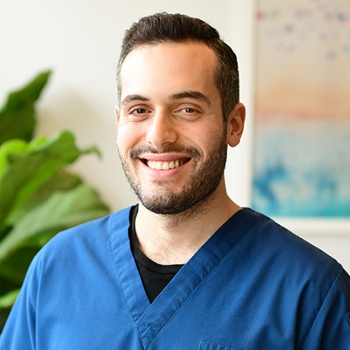Dental checkups and cleanings are an important element of your oral health care. Visiting the dentist can be unsettling for some, but regular checkups help maintain your oral health so you can keep smiling. They can also help address issues you may be having with your oral health, such as bleeding gums.
Sometimes, during a dental checkup, your dentist might discover early signs of gum disease, also known as gingivitis. Bleeding gums are a common sign of gingivitis, but it’s also possible to develop gingivitis without noticeable bleeding. Bleeding gums can also be caused by other health conditions and health factors, such as hormonal changes, nutritional deficiencies, blood-clotting abnormalities, and stress.
Healthy gums should not bleed. If they are bleeding, that could mean your gums require extra attention. While you shouldn’t be alarmed if you observe bleeding gums, you should visit your dentist for help preserving your oral health and preventing common conditions like gingivitis.
What Is Gingivitis?
Gingivitis is gum inflammation caused by the accumulation of plaque on your teeth. It can develop into periodontal disease, a severe and chronic bacterial infection that can damage the gums and bones supporting your teeth.
Gingivitis isn’t always painful and can develop without noticeable symptoms during its early stages, making it crucial to schedule routine dental exams to detect it early.
How Does Gingivitis Occur?
Plaque adhering at and below the observable boundary of the gums causes gingivitis. Plaque hardens into tartar if not removed daily by brushing and flossing, and tartar increases your risk of developing a bacterial infection.
Your gums could be red during the early stages of gingivitis, but you might not notice anything. Small patches of infection emerge gradually as gingivitis progresses. The infection caused by the bacteria gradually destroys the gum tissue and, if left untreated, may put you in danger of losing one or more teeth.
How Common Is Gingivitis?
Gingivitis affects roughly 7 out of 10 Canadians at some point in their lives. This prevalent dental issue can progress painlessly until you have a more serious issue, and because of that subtle progression, it is crucial to detect and stop gum disease before it worsens.
What Are the Signs of Gingivitis?
The signs and symptoms of gingivitis can include:
- Discomfort in your gums
- Persistent bad breath
- Red, puffy, and swollen gums
If you have gingivitis, your gums may also become puffy and bleed slightly when you brush and floss your teeth.
How Can You Prevent Gingivitis & Bleeding Gums?
When the plaque on your teeth is still soft, it is essential to remove it before it hardens into tartar and causes more serious issues for your dental health.
- Brushing: Brush your teeth carefully, focusing on the places where your teeth and gums connect. Ensure that you clean the whole surface of each tooth, including behind your upper and lower front teeth using the toothbrush tip.
- Flossing: Floss regularly by scraping each tooth several times from base to tip and repeating that process for each tooth. Flossing at least once a day can help remove plaque from hard-to-reach areas of your teeth.
- Avoid tobacco: Using tobacco products can harm your gums and increase your risk of developing gingivitis.
- Maintain a healthy lifestyle: To develop strong teeth and gums, the Canadian Dental Association suggests eating a balanced and nutritious diet. In addition, minimizing stress in your life can aid in the prevention of gingivitis.
What Else Causes Bleeding Gums?
Bleeding gums are commonly caused by plaque buildup left to turn into gingivitis. However, if you don’t have gingivitis but experience bleeding gums, don’t disregard the issue. Bleeding gums can also be caused by leukemia, insufficient amounts of vitamin K, hormonal fluctuations, scurvy, or drug use.
If you experience bleeding gums, it is important to see your dentist or doctor to establish the source and protect your overall health.
Dental Checkups Can Help Prevent Gingivitis & Other Issues
When you go in for a dental checkup, we can check your gums, tongue, and teeth for a variety of issues.
When checking your teeth, we typically look for tooth decay and early signs of cavities and examine previous dental work and the position of your teeth. We can also check for signs of clenching or grinding and inflammation or bleeding. Some less-known things we check for can include signs of mouth or throat cancer, temporomandibular joint (TMJ) disorders, and the general health of your face, jaw, and mouth.
Take Steps to Address Bleeding Gums
Regular brushing and flossing are vital for your dental health, and what cannot be cleaned up at home can be removed at the dentist’s office. Visiting your dentist regularly helps maintain a healthy mouth and prevent bleeding gums and other health concerns. You should see your dentist no fewer than twice a year for a thorough cleaning and dental checkup.
At Marks Dentistry, we know that maintaining good oral health requires collaboration, and we’re dedicated to helping maintain both your oral health and overall wellness. That all starts with helping keep your teeth and gums healthy.
Book an appointment today to see us for your next dental cleaning and ask us your questions about the conditions that can affect your teeth.




